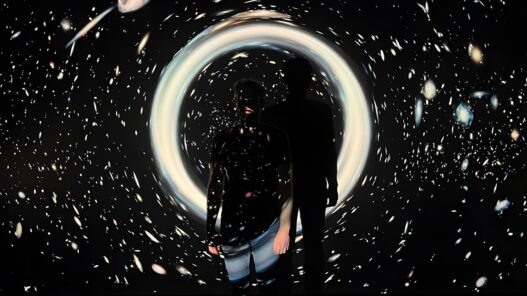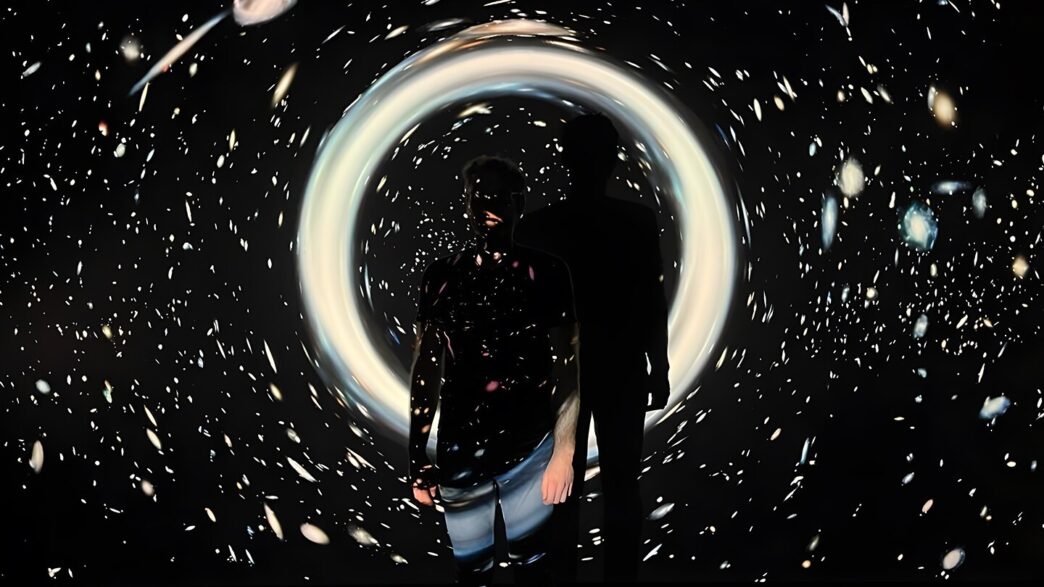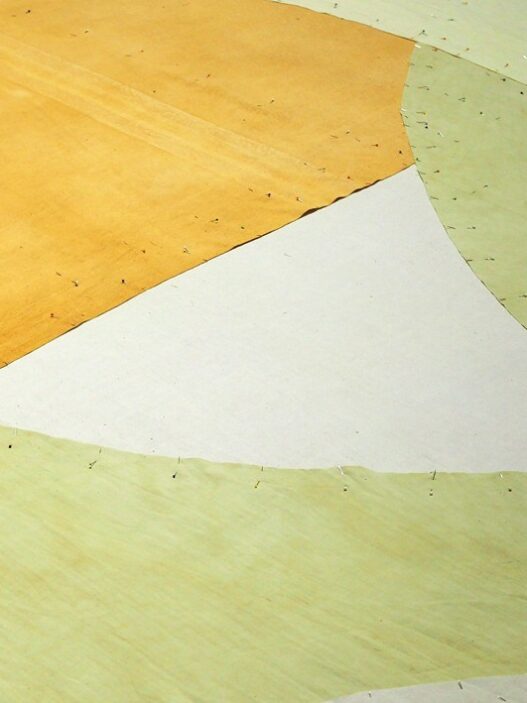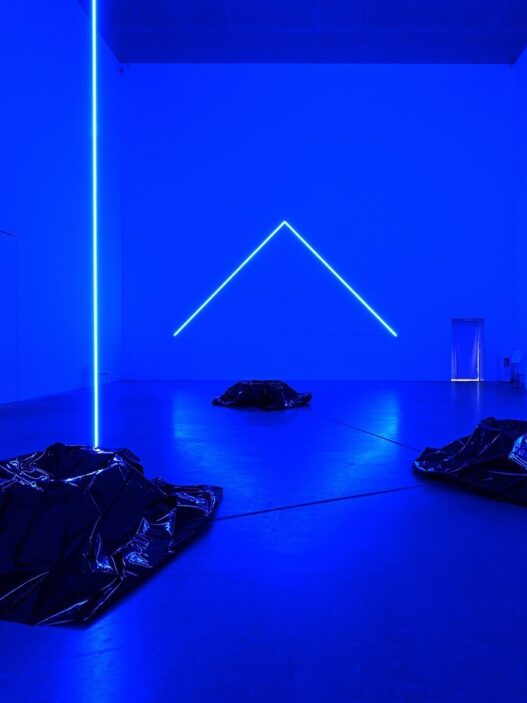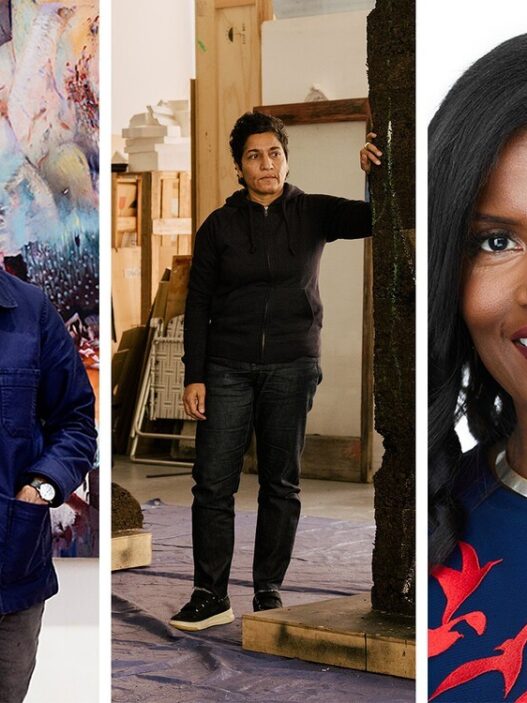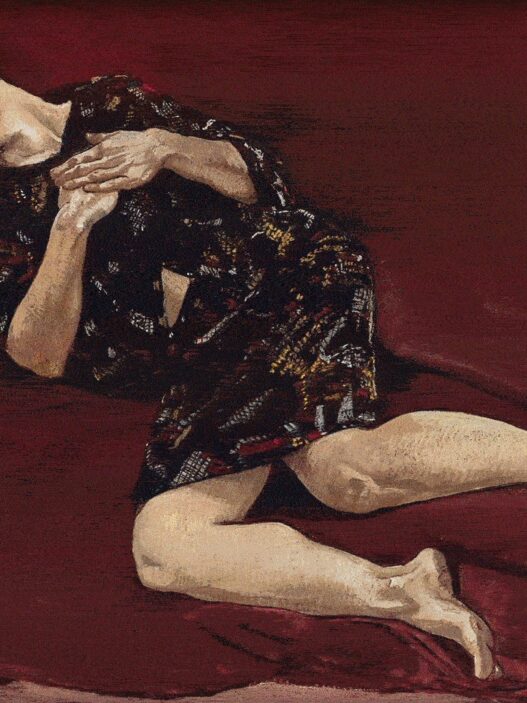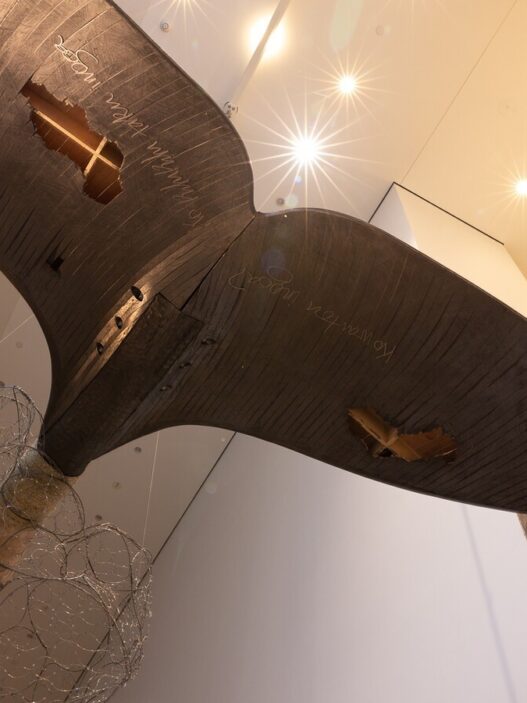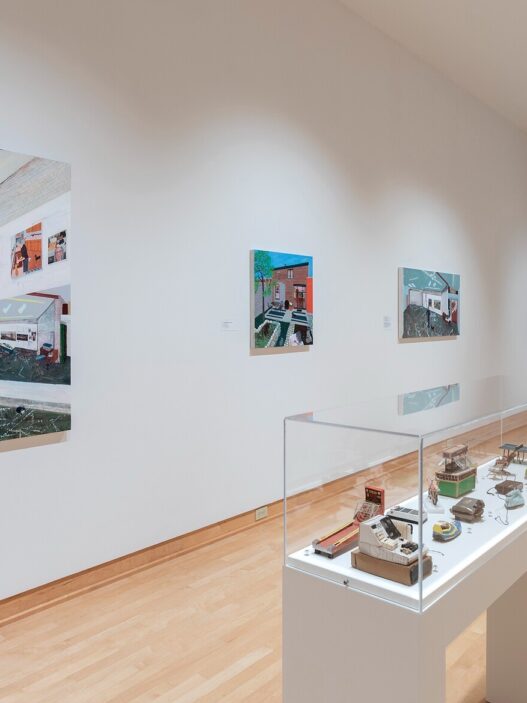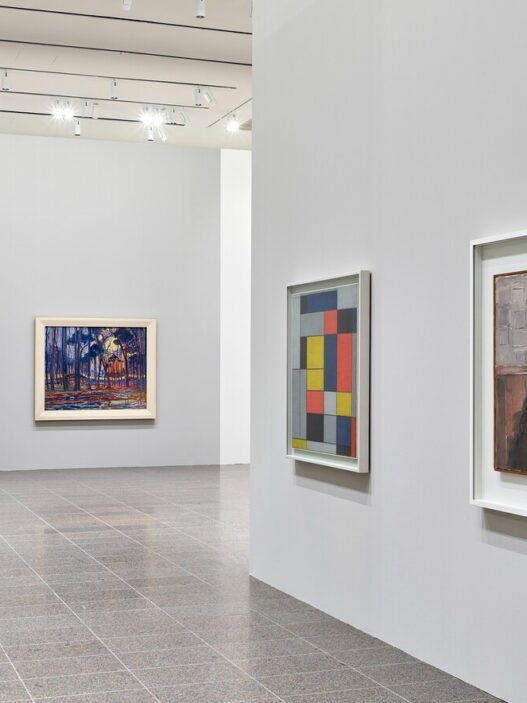September 16, 2022–February 5, 2023
How can we as humans even begin to fathom the size of the cosmos both in terms of time and space? Our species has developed ever-more-advanced technology for seeing and mapping the skies, first from Earth and more recently via probes sent out to explore and map the depths of space. This fascinating topic has inspired us to develop these technologies.
Data from the largest and most well-known space research missions are combined with less well-known but no less amazing attempts to learn everything there is to know about our universe in Cosmos Archaeology: Explorations in Time and Space. Images from the Hubble and Webb satellite telescopes, data from the Square Kilometre Array Observatory and the European Space Agency, and sounds from NASA’s Perseverance Mars rover are just a few examples of the cutting-edge scientific contributions. Astrophysicist Jocelyn Bell and the first African American trainee at NASA Edward Dwight are two heroes who have previously gone unnoticed because of their gender or race. Individual space pioneers are also honored, such as Swiss astronaut Claude Nicollier.
A significant two-year research partnership between EPFL’s Laboratory for Experimental Museology (eM+) and Laboratory of Astrophysics lies at the heart of the show (LASTRO). Through this endeavor, Cosmos Archaeology addresses some of the most important issues now confronting astrophysics.
Radar pulses, a variety of radio frequencies, spectral readings, and traditional photography enhanced by the most powerful lenses, mirrors, and telescopes in the world have all been used to gather information about our universe. As a result, analyzing exabytes of data, the majority of which takes the form of numerical datasets, is impossible for astrophysicists. Parallel to this, astronomers frequently use graphic representations of the cosmos. We are all familiar with the genre because it closely resembles science fiction or fantasy art. Illustrative methods may be visually alluring, but they alert viewers to the fact that what they are seeing is not accurate or based on genuine data. However, astrophysicists have recently worked to make use of immersive and interactive technology to visualize actual datasets.
A full 3D model of the cosmos as well as the tools to explore it are being built by astrophysics laboratories throughout the world, including EPFL’s LASTRO, in a perfect marriage of form and content. The difficulties of this project extend much beyond the apparent difficulty of creating a virtual architecture that is dynamic and complicated enough for the multidimensionality and elasticity of spacetime, let alone at the scale of the universe.
The 19 installations that make up Cosmos Archaeology use these innovations to shatter clichés around astro-illustration and the virtual “experience”—opening a conduit for the general people to immediately access this cosmos dataset that astrophysicists can also use. A six-degree-of-freedom interface for visualizing Einstein’s gravitational lens effect on a cosmic plane is one of the novel applications developed for Cosmos Archaeology. Another interactive installation immerses us in a dynamic universe where we are free to explore a spectacular 3D model of the galaxy that is housed in a realistic cave setting.
In Cosmos Archaeology, the issue of space pollution is also front and center. Three sound and image data visualization projects produced by scientists and artists highlight the necessity to trace and depict the presence and course of fragments in orbit around the Earth given the millions of bits of space junk obscuring our view of the sky.
The exhibition showcases a variety of pieces created by contemporary artists who have used astronomical information to investigate the universe in unique ways. Finally, using star mapping plates provided by the Sloan Digital Sky Survey, Swiss kinetic artist Pascal Bettex constructed a whimsical model of the universe that echoes the steampunk style. Cosmos Archaeology demonstrates how art has the ability to go beyond illustration and serve as a tool for both knowledge and science.
Artists: Simone Aubert, Pascal Bettex, Lily Hibberd, Anna Hoetjes, Theodore Kruczek, Project Adrift (Cath Le Couteur and Nick Ryan), Quadrature (Juliane Götz and Sebastian Neitsch), Florian Voggeneder
Full list of contributors
Curators: Prof. Sarah Kenderdine, Prof. Jean-Paul Kneib
EPFL Pavilions
Place Cosandey
1015 Lausanne
Switzerland
Hours: Tuesday–Sunday 11am–6pm
T +41 21 693 65 01
pavilions@epfl.ch









